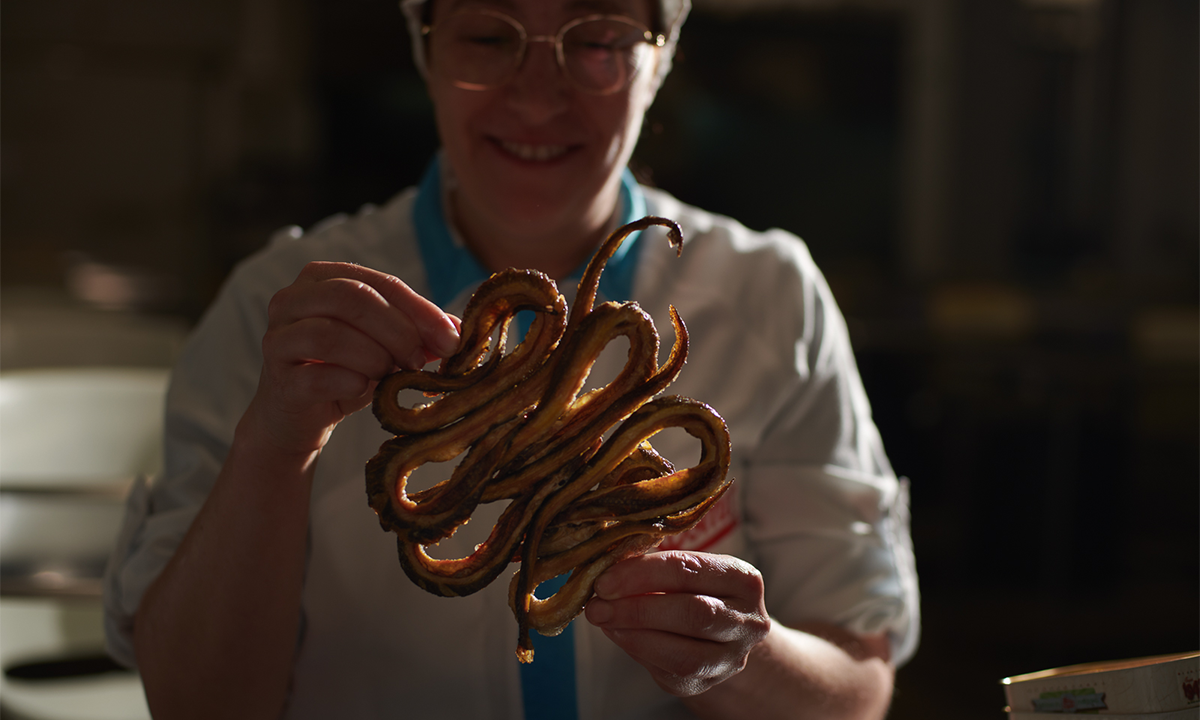The Eel – Seductive Sea Mermaid
- From the warm blue waters of the Sargasso Sea in Bermuda off the east coast of the United States of America, where they breed, eels venture on a mind-blowing ocean journey to Aveiro Lagoon to spawn in a fresh water environment that contrasts with the saline cradle of the Sargasso Sea. It's the same every year: a cycle that repeats itself time and time again. The abundant fresh and salt water inflows make the Aveiro Lagoon a natural habitat for this migratory species, justifying this long and impressive journey of several months and over 7,500 kilometres – a feat that few can aspire to.
The "moliceiros", the name given to both the men of the Lagoon and the low-sided boats that are typical of this region, know the result of this insane journey undertaken by the eels that could well personify mermaids. They figure out their rituals based on decades-old wisdom bequeathed by their predecessors. Using a "galricho", a tapered net where small pieces of crab are placed as bait, the "moliceiros" keep alive the tradition of catching eels, making this crop one of the icons of local identity.
And from the waters of the Aveiro Lagoon to Murtosa is a small jump, just 78 years. At the Comur factory in Murtosa, the traditional recipe of the region takes shape. And flavour.
In what is an entirely manual process, using sand at first due to the viscosity of eel skin, and later sawdust, preparing this delicacy can be a very challenging (and exasperating!) adventure for less experienced hands. But not so for the women of Murtosa, mistresses in the art of the knife and experts in making this complex process appear easy. In a flash, a lengthwise cut exposes the entrails that a nimble finger separates from the flesh shortly after.
Once referred to as "Murtosa fryers", the fishermen's wives fried the eels in olive oil in a square or rectangular, typically three-legged, pan. Once fried, the eels were placed in wooden barrels, and preserved in pickled sauce. The use of vinegar in the sauce prolonged its shelf-life, allowing the surplus to be sold further afield. It was especially useful for feeding troops during World War II, who found in this snack the highlight of hard days spent in battle.
This was how food was preserved before canned goods as we know them today. The wooden barrels of the time gave way to modern metal vats, and the "Murtosa fryers" now live on in the memory of their daughters and granddaughters who consolidate that tradition and work at Comur. But the processes remain entirely artisanal. And the original recipe for pickled eels does, too. Indeed, Comur is the only cannery in Portugal that offers this ready-to-eat delicacy in a can that evokes and honours its origin and the date of its creation: 1942.
It is not half-woman, half-fish, nor does it sing in a velvety voice that draws fishermen to their doom. But slender and elegant, with tender meat and an intense, tart flavour, eels in pickled sauce combine a sweet and salty tang resulting from the Homeric journey of their lives with a magic that can attract and enchant one towards the fatal destination of gastronomic sublimation.

The Fantastic World of the Portuguese Sardine ©2023 all rights reserved
made by Anahory&Monteiro

